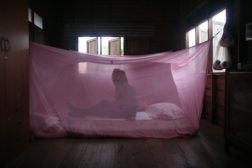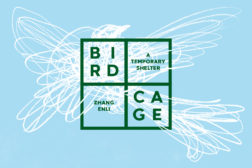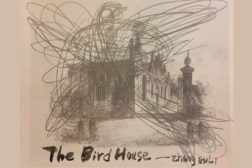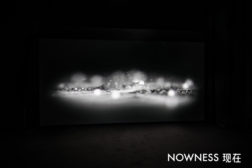
Bandung Pavilion featured at the 9th Shanghai Biennale
Exquisite Corpses And Other Memories Of The Twentieth Century
The Bandung Pavilion at the Shanghai Biennale considers the famous 1955 Asia-Africa Conference (AAC) as its starting point. Through a collective video project and a number of installations, the pavilion offers a way to think about the imaginative legacy of the conference today. In the process, the pavilion touches on international relationships between artists and their mediation through history, memories lost and found and the desires of today’s globally connected communities.
In the history of Bandung, and Indonesia in general, the Asia-Africa Conference was a major event in which newly post-colonial countries met for the first time and declared common stances on international issues. Twenty-nine countries took part and signed the Bandung declaration, a political statement containing ten basic principles in an effort to promote world peace and cooperation. It marked the re-emergence of large parts of Asia as a world force after the years of European hegemony and forged an alliance with the first free African states.
Looked at today, the conference can be understood to represent the beginnings of the shift in the world’s axis that is now so obvious. This historic meeting still holds a certain mythical status for the countries who took part, but little is understood in relation to current political developments, even though it was the first ever regional meeting to define a global agenda that originated outside Europe and North America. The success of the AAC is almost like a silent history. The traces left behind by the event itself have become obscured and almost invisible within the participating nations. The international ties that were built on a sense of a common fate and shared status as newly-independent nations has loosened under the dynamic impact of modernization, economic growth and the great shift in global political power structures. The loss of memory about the conference has shifted the ways we identify ourselves through the history of the city, the nation and the continent.
Given the growing economic and political significance of the states that took part in 1955–including China, Indonesia, India, Egypt and Turkey–the Bandung Conference is ripe for reinterpretation. It could come to be seen by the emerging generation today, as the start of a new way of understanding the world and the links between Asia and the rest of the world. The AAC thought in ‘continental’ terms rather than the local-global debate that fuels so much current thinking about cultural relations.
By using the conference as a starting point, underlying relationships of mutual sympathy and common understanding amongst artists from different areas of the ‘global south’ can be explored. The presentation at the Bandung Pavilion is part of a wider attempt by ArtHub Asia to revive the memory of the conference and utilize it for contemporary needs. The overall project seeks to reestablish connections between artists living in the different countries of the AAC and to investigate what they might share today, or wish to share in the future.
For the Shanghai Biennale, a number of artists from countries including Egypt, Lebanon, India, Thailand and Turkey have been invited to join in an unfolding video project called Cadaver Exquis, based on the old Surrealist drawing game. Each artist was invited to make a maximum 3 minute film of which the last minute was sent to the next artist to add his or her 3 minute section. In this way a 20 minute film is shown in the Pavilion as a way to provoke thoughts on connectedness and similarity across the geographic divides. The film begins in the city of Bandung and ends in Indonesia, closing the loop on a journey through an international territory that was first marked out in 1955 in Bandung.
The artists taking part in the Cadavre Exquis film are: Muhammed Akbar (ID), Mounira AL-Solh (LB), Mahmoud Khaled (EG), Didem Ozbek (TR), Surasi Kusolwond (TH), Wang Wei (CN) and Hafiz (ID).
In addition, four pairs of artists have been invited to collaborate using digital communications and internet exchange to make collaborative works in the space for the pavilion. There are four Indonesian artists, mostly based in Bandung, paired with four international artists from countries present at the AAC. These works will be physically produced in Bandung in a way that mirrors the host-guest relationship of the original conference. Hopefully, some surprises for both sides will be provided, in a similar way to the debates developed in 1955.
The artists are: Duto Hardono (ID) with Meiro Koizumi (JP); Iswanto Hartono (ID) with Raqs Media Collective (IN); Syagini Ratna Wulan (ID) with Yason Banal (PH) and Wiyoga Muhardanto (ID) with Arin Rungjang (TH).
Finally, a limited amount of original documentary material about the original conference will offer a brief historical overview for visitors about why the traces of the AAC might be a worthwhile memory to revive at this present time.
Bandung Pavilion curators: Defne Ayas, Charles Esche and Davide Quadrio for ArtHub Asia and Agung Hujatnikajennong.




